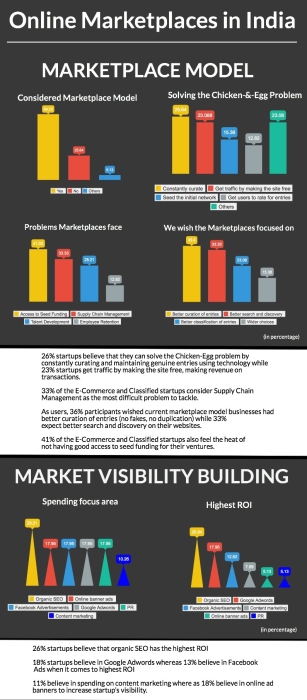” For the uninitiated, a ‘ Marketplace-Model’ is where a Retailer (Modern / New-age), simply creates the platform for sellers and buyers”…
This is in contrast to the standard inventory model, where the retailer owns the entire inventory that is listed on the website. Obviously, a marketplace model results in a more agile company since inventory, warehousing and fulfillment costs are borne by the seller directly.
Post mid-2013, various Marketplaces have emerged in India…“Amazon, Flipkart, Quikr, OLX, Snapdeal, ebay, etc” are trying to create the marketplace ecosystem in India..
While a Marketplace Strategy may be a boon for some Retailers, it could be a bane for others. But how it affects a business depends on a number of variables.
This includes the type of products one sells, the kind of market one is operating in, intensity of competition in a particular category, marketplace fees and restrictions, and a dozen more factors…
Many E-commerce players are slowly moving towards a marketplace model for various different reasons. Better inventory management, wide range of inventory or lower logistics support might be a few reasons for e-commerce players to shift to marketplace model. Starting a two-sided marketplace is becoming incredibly challenging with the growing competition in India.
Most marketplaces face the “chicken-and-egg” problem while scaling as interactions between buyers and sellers increase… Less buyers – more sellers OR more buyers – less sellers is a classic economics supply and demand mismatch problem.
Here are a few “key insights” we derived from our interactions with E-commerce/Marketplace Entrepreneurs :
- 13% startups trust in getting users to rate for entries to democratically bring up great quality entries while 15% trust in seeding the initial network with very high quality entries
- 33% of the E-Commerce and Classified startups consider Supply Chain Management as the most difficult problem to tackle
- 41.03% of the E-Commerce and Classified startups also feel the heat of not good access to seed funding for their ventures
- As users, 36% participants wish current market place model businesses to have better curation of entries (no fakes, no duplication) while 33% expect better search and discovery on their websites
- 25.64% start-ups believe that organic SEO has the highest ROI
- 26% startups believe that they can solve the Chicken-Egg problem by constantly curate and maintain genuine entries using technology while 23% startups get traffic by making the site free, making revenue on transactions
- 18% startups believe in Google Adwords where as 13% believe in Facebook Ads when it comes to highest ROI
- 11% believe in spending on content marketing where as 18% believe in online ad banners to increase startup’s visibility.
